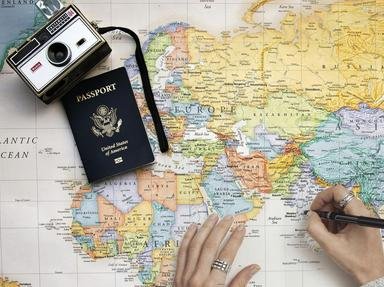Quiz Answer Key and Fun Facts
1. On one of the many long stretches of road that comprise the Pan-American Highway, there is a very large missing link about 54 miles long, where no road exists. It's known as the Darien Gap. It falls into two countries - on one side is Panama; which country is on the other?
2. Traversing the Darien Gap is exceedingly difficult. There is jungle, marshland, swamps, tall mountains and many other obstacles. Yet roads have been built in other countries under very challenging circumstances. What is the primary reason that the highway has not been built through the Gap?
3. The so-called "Darien Scheme", which began in 1698, was an attempt by a certain European country to colonize the area for trading. The Isthmus of Panama was ideally located for such a venture. The expedition was a dismal failure and cost that country dearly. Which country attempted it?
4. Although there had been many previous attempts, Britain's Ian Hibell was the first to make a fully overland, wheeled crossing of the Darien Gap. No boats or ferries were involved. How did he accomplish this? Take a guess.
5. There is yet another issue between the two countries within the Gap. It concerns the spread of a particular disease among livestock. It is feared that this disease might spread into Panama if a connecting road is built. What disease is it?
6. Most travelers attempting to cross the Darien do so from the Panama side, and permits to enter the area must be obtained. What is the position of the Panamanian government concerning over-land expeditions through the Darien Gap?
7. The Darien Gap is now considered one of the most dangerous places in the world. The several countries involved, including the United States State Department, have issued repeated warnings to citizens against traveling there.
8. A little-known chapter in the saga of historical expeditions is the U.S. Darien Exploring Expedition, which began in 1854. What was the purpose of the expedition - what did they hope to accomplish?
9. In spite of all the area's problems, the Darien remains a stunningly beautiful place. The diversity of flora and fauna is unsurpassed in all but a few places in the world. It has been designated a "biodiversity hot-spot" by Conservation International. What does this mean?
10. The Embera-Wounaan and the Kuna are indigenous groups whose home was in the Darien jungles. Were these indigenous people still living there in the early 21st century?
Source: Author
robbieh
This quiz was reviewed by FunTrivia editor
Pagiedamon before going online.
Any errors found in FunTrivia content are routinely corrected through our feedback system.
